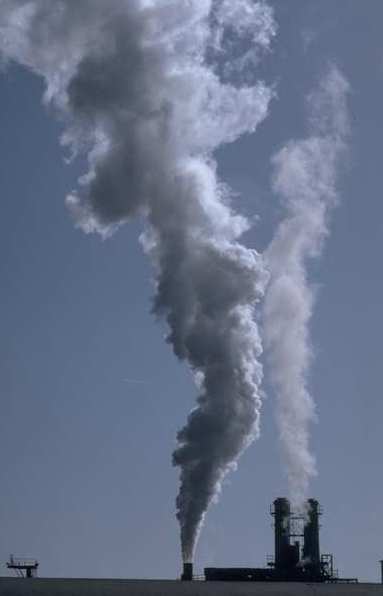|
The World
Market for Thermal Flowmeters
Now Shipping!!!
|
In addition to our studies, we have been following this market closely since 2002. Many developments have been described in our quarterly report, the Market Barometer. Each issue of the Market Barometer includes an update on the thermal flowmeter market. This new study builds on the knowledge we have gained over the years, but it is a completely new look at this market. For more information on the Market Barometer, go to www.worldflow.com.
This study addresses the key issues in the thermal flowmeter market, including:
- The
use of thermal flowmeters for continuous emissions monitoring (CEM)
- The
growing use of thermal flowmeters for environmental monitoring
applications
- The
use of insertion thermal flowmeters for flare gas measurement
- The
role of thermal flowmeters in measuring greenhouse gas emissions
- The
increased number of suppliers to this market
- New
product and technology developments
- Growth
strategies for thermal flowmeter suppliers
Segmentation
This
study includes market size in dollars and units for thermal flowmeters
worldwide and by geographic region. It reveals market shares by geographic region.
It says what industries thermal flowmeters are sold into.
The study also includes other important segmentation, including:
-
Geographic segmentation worldwide and by eight world regions
-
Inline vs. Single Point Insertion vs. Multipoint Insertion
-
Constant power vs. constant temperature
-
Gas, air, liquid
-
Compact, remote
-
Line size
-
Smart vs. conventional
-
Communication protocol
-
Industry (11 industries)
-
Application (11 applications)
-
Sales channel
-
Customer type
Background of Study
One of the most interesting areas of development today among new-technology flowmeters is in thermal flowmeters. This is due in part to the fact that this technology is still very young. Thermal meters grew out of hot wire anemometers, whose roots go back to the early 1900s. It was not until the 1960s that thermal flowmeters were developed out of hot wire anemometers. While this technology has been around almost as long as ultrasonic (1963), and longer than Coriolis (1977), it has yet to be developed to the level in terms of products as ultrasonic or Coriolis technologies.
Both thermal and Coriolis flowmeters measure mass flow. However, thermal meters measure mass flow quite differently from Coriolis meters. Instead of using fluid momentum, as do Coriolis meters, thermal flowmeters make use of the thermal or heat conducting properties of fluids to determine mass flow. While most thermal flowmeters are used to measure gas flow, a small percentage also measure liquid flow.
Hot wire anemometers consist of a heated, thin wire element, and are very small and fragile. Hot wire anemometers were used in velocity profile and turbulence research. Because they are susceptible to breakage and to dirt, they are not suited to industrial environments. Industrial thermal flowmeters use a similar concept of measuring the speed of heat dissipation to determine mass flow, but use more rugged sensors that are better adapted to industrial environments.
The Coming Age of Thermal Flowmeters
In the past, thermal flowmeters were significantly helped by environmental regulations. In the early 1990s, new environmental regulations began requiring companies to detect and reduce the emission of sulfur dioxide (SO2) and nitrous oxide (NOX) into the air. SO2 and NOX are two main causes of acid rain.
The Environmental Protection Agency (EPA) initiated a program to reduce pollution in the atmosphere. It is possible to determine how much of these substances are released into the atmosphere by combining a measurement of the flowrate with a measurement of the concentration of SO2 and NOX. EPA regulations have resulted in the development of an entire industry around CEM, including the introduction of Continuous Emission Systems (CEMs).
In
response to CEM requirements, thermal flowmeter companies developed
multipoint thermal flowmeters. In
many cases, continuous emissions monitoring occurs in large stacks that
emit pollution from industrial sources.
Single point thermal flowmeters measure flow at a point, making it
difficult to accurately compute flow in a large pipe or smokestack.
Multipoint thermal flowmeters measure gas flow at multiple points,
and use these values to compute flow for the entire pipe, duct, or stack.
Some
flowmeters. In
many cases, continuous emissions monitoring occurs in large stacks that
emit pollution from industrial sources.
Single point thermal flowmeters measure flow at a point, making it
difficult to accurately compute flow in a large pipe or smokestack.
Multipoint thermal flowmeters measure gas flow at multiple points,
and use these values to compute flow for the entire pipe, duct, or stack.
Some
While the need for CEM is ongoing, the 21st century has brought new environmental awareness and requirements. Scientific thinking has evolved substantially in the past ten years. While global warming and the need to reduce carbon emissions were once viewed as scientific theory, they are now widely accepted as scientific fact. And in the United States, the Obama administration has made a commitment reducing greenhouse gas emission 80 percent by 2050. The new administration is also pledging to make the United States a leader in climate change.
It is not just the United States that is working to reduce greenhouse gas emissions. The Kyoto Accord, an international treaty designed to reduce greenhouse gas emissions internationally, has resulted in the creation of several mechanisms that require measurement of greenhouse gases. These include Certified Emission Reductions (CER), which allow carbon emitters to gain credits for carbon emitted elsewhere. Another program is the Clean Development Mechanism (CDM), which allows countries to invest in sustainable development projects that reduce emissions in developing countries.
The new age of environmental awareness, together with the Kyoto Accord and other greenhouse gas initiatives, has resulted in a rewriting of the rules on measuring greenhouse gas emissions. There is suddenly a need and demand to measure greenhouse gases in applications that formerly may have gone unnoticed. Many of these applications present opportunities for thermal flowmeters, including the following:
· Measurement and recovery of landfill gas
· Ethanol distillation and refining
· Measuring emissions from steam generators, boilers, and process heaters
· Biomass gasification
· Recovery of methane from coal mines
· Monitoring of flue gas
· Measurement and monitoring of flare gas flow
Flow Research has completed or has scheduled a series of sixteen studies that include all types of flowmeters. Information about these studies is at http://www.flowresearch.com/flow.htm. This study should be of special interest to any manufacturer of thermal flowmeters, and to users and specifiers of thermal flowmeters.
To order this study, contact Flow Research by email at jesse@flowresearch.com, or call Flow Research at 781-245-3200. In the United States, call toll free at (800) 245-1799. Or, use our handy Order Form.
 |
Flow Research, Inc. 27 Water Street Wakefield, MA 01880 (781) 245-3200 (781) 224-7552 (fax) info@flowresearch.com |
